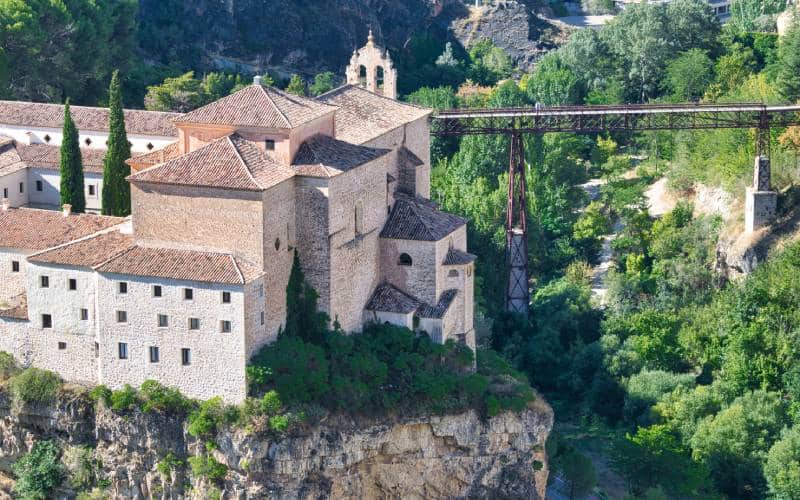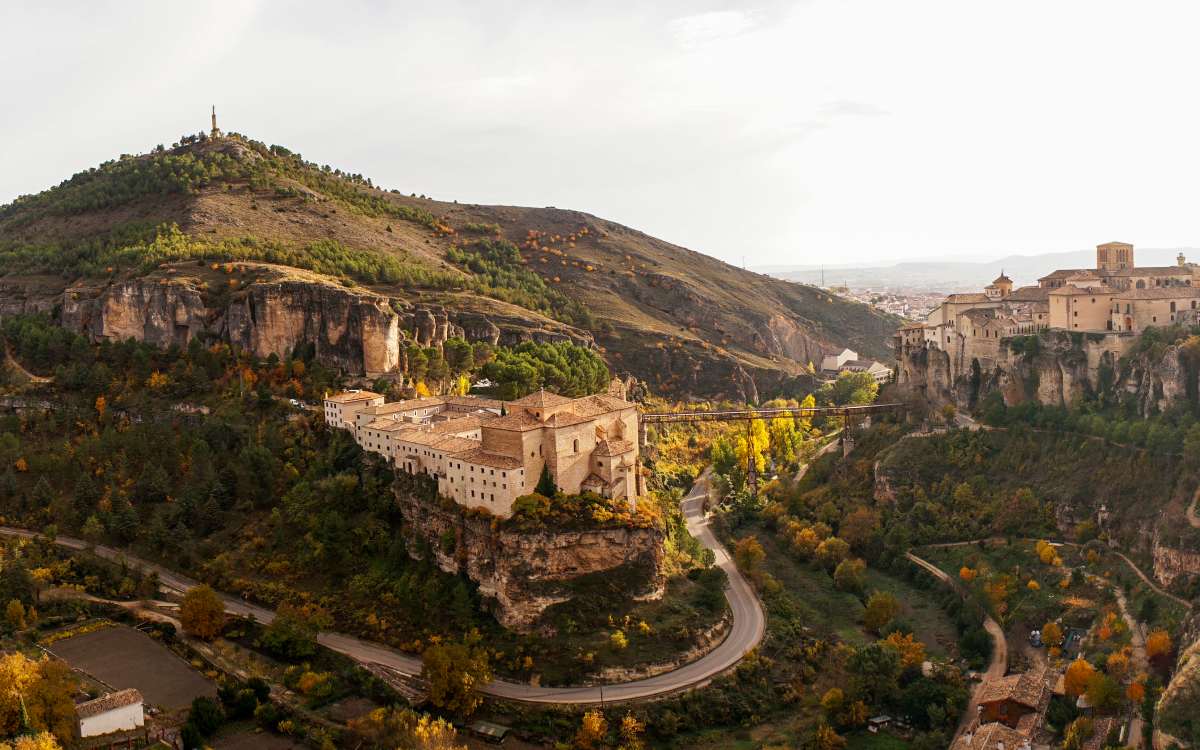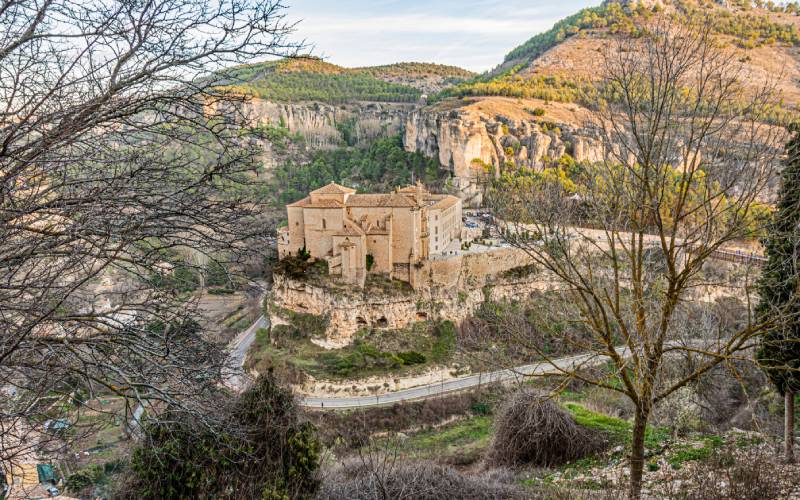
There is no doubt that the Convent of San Pablo is one of the greatest tourist attractions in Cuenca. It sits on a spectacular high spot, surrounded by mountains and vegetation on the left side of the Hoz del río Huécar, a beautiful natural landscape. Today, this building, known as the Convent of San Pablo for many years, is a fantastic Parador Nacional.
Since it faces the famous Hanging Houses of Cuenca and the red bridge of San Pablo, the old monastery is the spot many people choose to take a perfect picture. Besides, it is an emblematic place extremely cherished by people in Cuenca. Whether you decide to stay the night here or simply visit the place, it is worth admiring.

The monastery seems to hang from the mountains it’s settled in. | Shutterstock
The original convent was built on top of a tiny monastery and used as the headquarters of the Dominican Order. It was designed by the brothers Juan and Pedro de Alviz. The works began in the year 1523 under canon Juan del Pozo’s guidance, whose sepulchre rests in the same church. The construction of the main building took more than 15 years, which was actually a short time considering the precarious means that were available at the time.
Many years later, the bridge that links the monastery to the highest part of the city of Cuenca was built, so the convent would integrate into the city. And it did, undoubtedly. Its baroque portal contrasts with its interior Gothic structure and its Renaissance decor. The remaining buildings were built at a later time, a fact that can be perceived just by looking at them.

Bridge and Convent of San Pablo. | Shutterstock
The complex of San Pablo underwent major renovations in the 18th century. The previously Gothic portal was destroyed to make way for a new Baroque portal. This monumental complex has suffered constant changes throughout its history. After the Ecclesiastical Confiscations of Mendizábal, the Dominican Order was forced to abandon their convent in 1836. The Diocese finally bought the whole building in a public auction and installed there the High School Seminary of San Pablo, linked to the Seminary of San Julián.
In the year 1885, it was transformed into a hospital. The cathedral tower would collapse afterwards, in 1921. One year later, it passed on to the Congregation of the Mission, or the Paúles. They renovated the complex and worked hard on the remodelling work.

Panoramic view of the convent and its surroundings. | Shutterstock
The complex was also used as a school for poor children during Franco’s dictatorship. It also served as a nursery and a sanatorium. This was a controversial choice since patients were hosted here.
However, it was always a high-maintenance building, and public and/or private investment was required to financially support it. In 1993, thanks to the community investment of one billion pesetas, it became a Parador Nacional, a thought that first appeared in the 1970s and took 20 years to formalise.

The Convent of San Pablo, built on the cliffs of Huécar. | Shutterstock
Since the 1st of October 1993, the old convent has been a wonderful Parador. It sits in an extremely privileged natural location and is a gorgeous romantic destination that offers great views of the Hanging Houses and the Hoz del Huécar. Many famous personalities have stayed here, such as the current kings of Spain, who spent the first night of their honeymoon in the Parador. This is one of Cuenca’s most emblematic buildings–the best pictures of the city have been taken here.

View of the famous Hanging Houses. | Shutterstock
There are 63 rooms in the Parador, and two of them are suites, but they all offer breathtaking sights. The cloister courtyard awaits visitors in the main room and is the centre of the Parador. Besides, the café on the terrace is perfect for a moment of relaxation. But if that wasn’t enough, the building (in particular, its cloister) has been an Art Centre since 2005.
You can also read this article in Spanish here.
Follow us on Facebook!